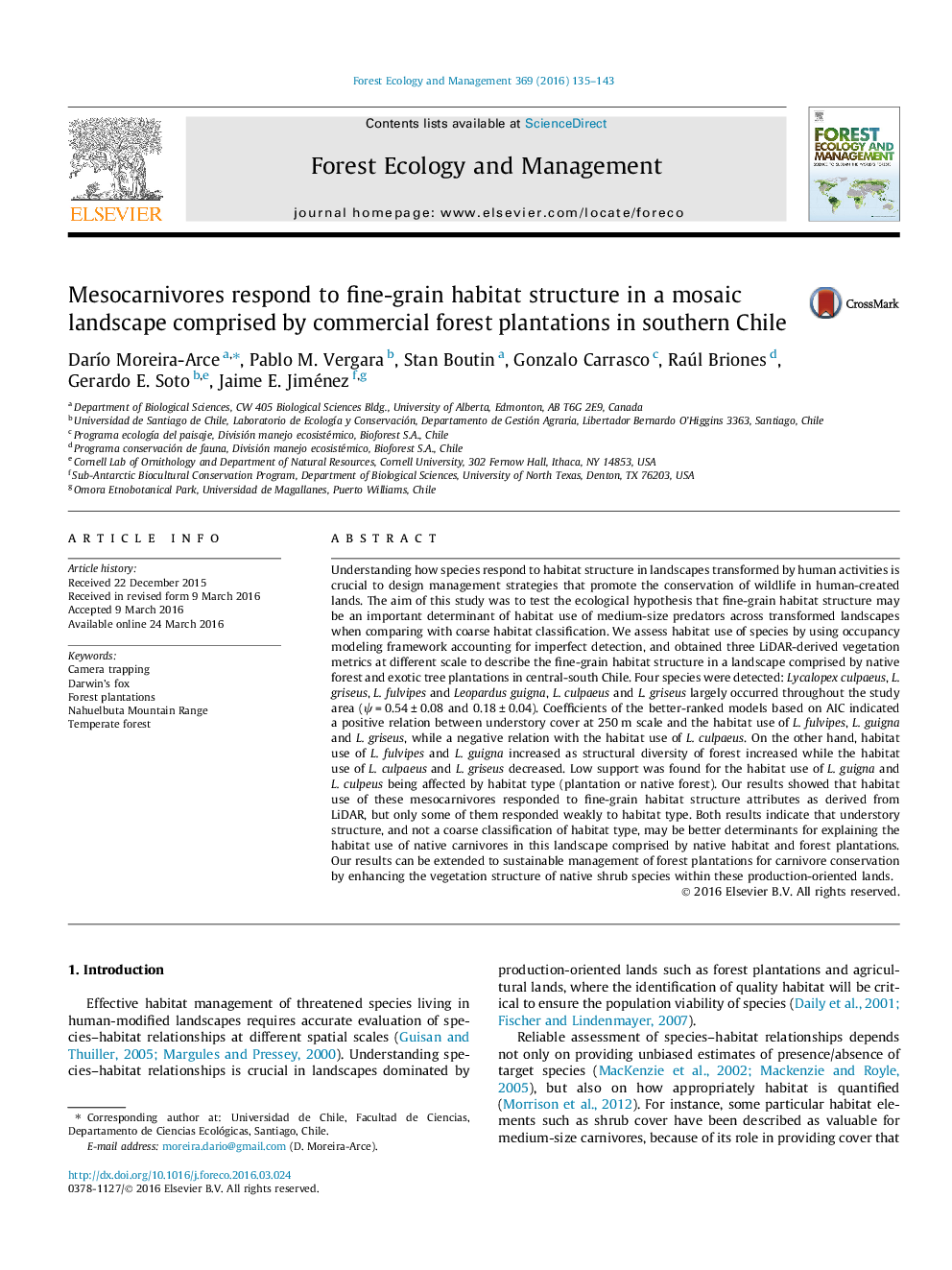| کد مقاله | کد نشریه | سال انتشار | مقاله انگلیسی | نسخه تمام متن |
|---|---|---|---|---|
| 85936 | 159152 | 2016 | 9 صفحه PDF | دانلود رایگان |

• Understanding species–habitat relationships is crucial in human-created landscapes.
• Relationships require estimates of species occurrence and habitat quantification.
• The importance of habitat structure in the habitat use of carnivores was analyzed.
• Understory cover and vegetation complexity explained the habitat use of carnivores.
• Fine-grain estimates of habitat largely explained the habitat use of carnivores.
Understanding how species respond to habitat structure in landscapes transformed by human activities is crucial to design management strategies that promote the conservation of wildlife in human-created lands. The aim of this study was to test the ecological hypothesis that fine-grain habitat structure may be an important determinant of habitat use of medium-size predators across transformed landscapes when comparing with coarse habitat classification. We assess habitat use of species by using occupancy modeling framework accounting for imperfect detection, and obtained three LiDAR-derived vegetation metrics at different scale to describe the fine-grain habitat structure in a landscape comprised by native forest and exotic tree plantations in central-south Chile. Four species were detected: Lycalopex culpaeus, L. griseus, L. fulvipes and Leopardus guigna, L. culpaeus and L. griseus largely occurred throughout the study area (ψ = 0.54 ± 0.08 and 0.18 ± 0.04). Coefficients of the better-ranked models based on AIC indicated a positive relation between understory cover at 250 m scale and the habitat use of L. fulvipes, L. guigna and L. griseus, while a negative relation with the habitat use of L. culpaeus. On the other hand, habitat use of L. fulvipes and L. guigna increased as structural diversity of forest increased while the habitat use of L. culpaeus and L. griseus decreased. Low support was found for the habitat use of L. guigna and L. culpeus being affected by habitat type (plantation or native forest). Our results showed that habitat use of these mesocarnivores responded to fine-grain habitat structure attributes as derived from LiDAR, but only some of them responded weakly to habitat type. Both results indicate that understory structure, and not a coarse classification of habitat type, may be better determinants for explaining the habitat use of native carnivores in this landscape comprised by native habitat and forest plantations. Our results can be extended to sustainable management of forest plantations for carnivore conservation by enhancing the vegetation structure of native shrub species within these production-oriented lands.
Journal: Forest Ecology and Management - Volume 369, 1 June 2016, Pages 135–143